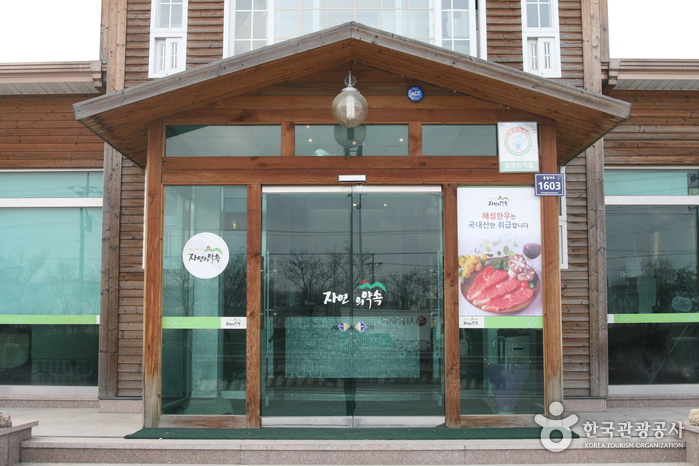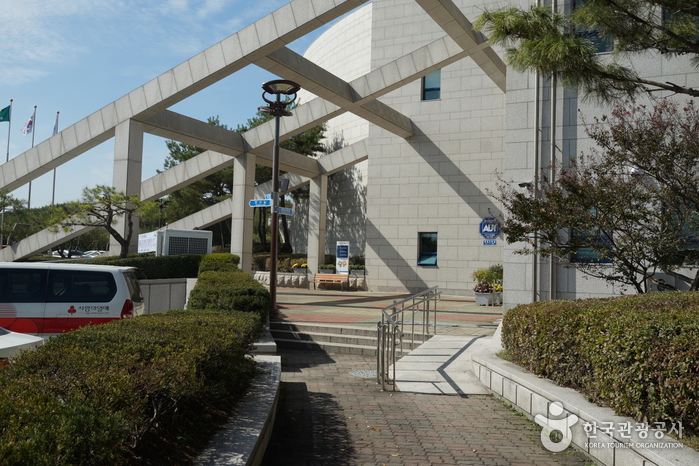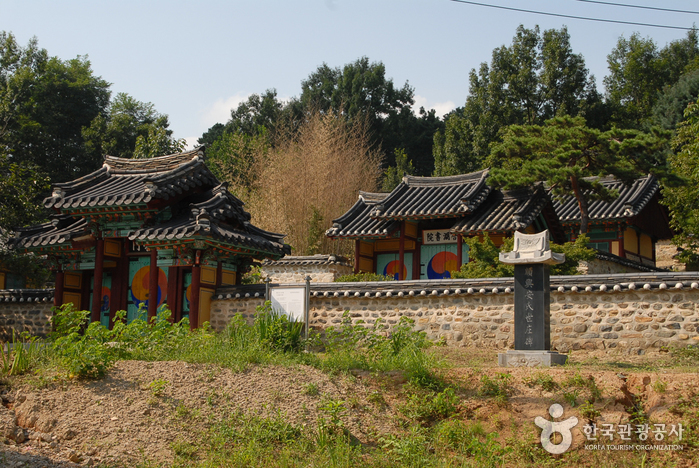Haeseong (해성)
18.1Km 2024-03-25
1603 Chungcheong-daero, Jeungpyeong-eup, Jeungpyeong-gun, Chungcheongbuk-do
043-838-3939
Haeseong specializes in Korean beef, gaining acclaim for its grilled galbi. The restaurant sources its premium beef exclusively from Goesan and Jeungpyeong, known for their unspoiled environments. This ensures patrons can savor the distinct flavors of each beef cut. The signature dish is the tender and chewy kkotgalbisal (grilled boneless galbi). Another favorite is the Sohanmari (assorted beef cuts), which includes a variety of cuts such as sirloin, strip loin, beef brisket, and thin flank. Being directly managed by the National Agricultural Cooperative Federation, Haeseong offers these high-quality dishes at reasonable prices.
Sejong Culture & Arts Center (세종문화예술회관)
18.1Km 2025-05-20
22, Munyehoegwan-gil, Sejong-si
+82-44-301-3523
Located in Sejong Special Self-Governing City, the Sejong Culture & Arts Center is a multi-purpose cultural space for performances and exhibitions. It offers a variety of opportunities for local artists as well as a place to enjoy culture and arts for local residents.
Cheongnamdae Presidential Villa (청남대)
18.4Km 2023-04-13
646, Cheongnamdae-gil, Sangdang-gu, Cheongju-si, Chungcheongbuk-do
+82-43-257-5080
Cheongnamdae, which means "Cheong Wa Dae in a warm southern land," was once a private villa used by former presidents of Korea. Cheongnamdae became open to the public on April 18, 2003. It is located near Daecheong Dam in Cheongwon-gu, Chungcheongbuk-do and was built in 1983. The total area spans 1,825,000m² and consists of a main building, golf range, heliport, and fishing area. The natural environment surrounding the area has been well preserved, serving as a home to wildlife, including over 143 species of wild flowers and 124 species of trees as well as several endangered species.
Haposeowon Confucian Academy (합호서원)
18.4Km 2025-05-20
262-6, Wonhapgang 1-gil, Yeondong-myeon, Sejong
+82-44-330-5832
Registered as Cultural Heritage Material, Haposeowon Confucian Academy is where the spiritual tablet of An Hyang, a respected scholar during the Goryeo period, is enshrined. The academy was founded in 1716 by the scholar's descendants, who held regular memorial services until a royal order to close down most seowon institutions was made in the late Joseon dynasty. In 1949, Haposeowon Confucian Academy was rebuilt as an affiliated institution with the consent of 218 local Confucian schools nationwide.
Boeun White Dandelion Eco-Village (보은 하얀민들레한옥마을)
18.5Km 2025-07-11
111-2 Busu-gil, Hoein-myeon, Boeun-gun, Chungcheongbuk-do
Boeun White Dandelion Eco-Village is located in Boeun-gun. The hanok building comprises two floors. The upper part of the hanok is used for accommodation and dining, while the lower part of the building serves as both a gallery and lodging. In addition to accommodation, visitors can enjoy various hands-on experience programs, including embroidery, natural dyeing, printmaking, puffed grain making, and a Joseon-era lifestyle experience. It has recently gained popularity after being featured in a variety show with K-pop idols.
La Foresta (라포레스타)
18.7Km 2025-05-20
130 Daecheop-ro, Yeonseo-myeon, Sejong-si
La Foresta is a café with a spacious outdoor garden. The interior has a cozy atmosphere with wood tones. The garden is adorned with various types of trees and flowers, creating a park-like ambiance. Signature drinks include foresta double latte, made with hazelnut milk and espresso, blood orange featuring blood orange infused tea, and dewy cherry mango, a refreshing blend of cherry tea with mango puree and coconut jelly.
Sejong Yeonhwasa Temple (연화사 (세종))
19.0Km 2025-05-20
28-1, Yeonhwasa-gil, Sejong-si
+82-44-862-8620
Yeonhwasa Temple is said to have been built by Hong Mun-seop. After having a dream, Hong dug the current site of Yeonhwasa Temple to find two stone Buddha statues and built a temple there. It was designated a traditional temple in 1988. The temple features Muryangsujeon Hall, Samseonggak Hall, and Yosachae (monks’ residence).
There used to be a building with a tile roof, but following the discovery of a stele with the inscription of “Muin Year” and a pedestal, the roof was improved. The side of the stele is in a trapezoid shape with a wider bottom. It is thought to date back to the Unified Silla era. The temple is also home to a stele with seven relief Buddhist images. Together with the stone images of Biamsa and Jeonganmyeon, this stele is considered to have cast a new light on the Ancient Art.





 English
English
 한국어
한국어 日本語
日本語 中文(简体)
中文(简体) Deutsch
Deutsch Français
Français Español
Español Русский
Русский